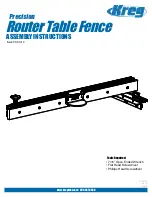
R E V I E W D R A F T # 1 — C I S C O C O N F I D E N T I A L
3-14
Cisco WRP500 Administration Guide
Chapter 3 Configure Voice Services
Configure Dial Plans
EXAMPLE:
( [1-8]xx | 9, xxxxxxx | 9, <:1>[2-9]xxxxxxxxx | 8, <:1212>xxxxxxx | 9, 1 [2-9]
xxxxxxxxx | 9, 1 900 xxxxxxx ! |
9, 011xxxxxx.
| 0 | [49]11 )
9, 011xxxxxx.
After the user presses 9, an external dial tone sounds. The user can enter any number
that starts with 011, as in an international call from the U.S.
•
Informational numbers
EXAMPLE:
( [1-8]xx | 9, xxxxxxx
|
9, <:1>[2-9]xxxxxxxxx | 8, <:1212>xxxxxxx | 9, 1 [2-9]
xxxxxxxxx | 9, 1 900 xxxxxxx ! | 9, 011xxxxxx. |
0 | [49]11
)
0 | [49]11
This example includes two digit sequences, separated by the pipe character. The first
sequence allows a user to dial 0 for an operator. The second sequence allows the user to enter 411
for local information or 911 for emergency services.
Acceptance and Transmission the Dialed Digits
When a user dials a series of digits, each sequence in the dial plan is tested as a possible match. The
matching sequences form a set of candidate digit sequences. As more digits are entered by the user, the
set of candidates diminishes until only one or none are valid. When a terminating event occurs, the
WRP500 either accepts the user-dialed sequence and initiates a call, or else rejects the sequence as
invalid. The user hears the reorder (fast busy) tone if the dialed sequence is invalid.
The following table explains how terminating events are processed.
Terminating Event
Processing
The dialed digits do not match any
sequence in the dial plan.
The number is rejected.
The dialed digits exactly match one
sequence in the dial plan.
•
If the sequence is allowed by the dial plan, the
number is accepted and is transmitted according to
the dial plan.
•
If the sequence is blocked by the dial plan, the
number is rejected.
A timeout occurs.
The number is rejected if the dialed digits are not
matched to a digit sequence in the dial plan within
the time specified by the applicable interdigit timer.
•
The Interdigit Long Timer applies when the dialed
digits do not match any digit sequence in the dial
plan. The default value is 10 seconds.
•
The Interdigit Short Timer applies when the dialed
digits match one or more candidate sequences in the
dial plan. The default value is 3 seconds.
The user presses the # key or the
dial softkey on the phone display.
•
If the sequence is complete and is allowed by the dial
plan, the number is accepted and is transmitted
according to the dial plan.
•
If the sequence is incomplete or is blocked by the dial
plan, the number is rejected.















































